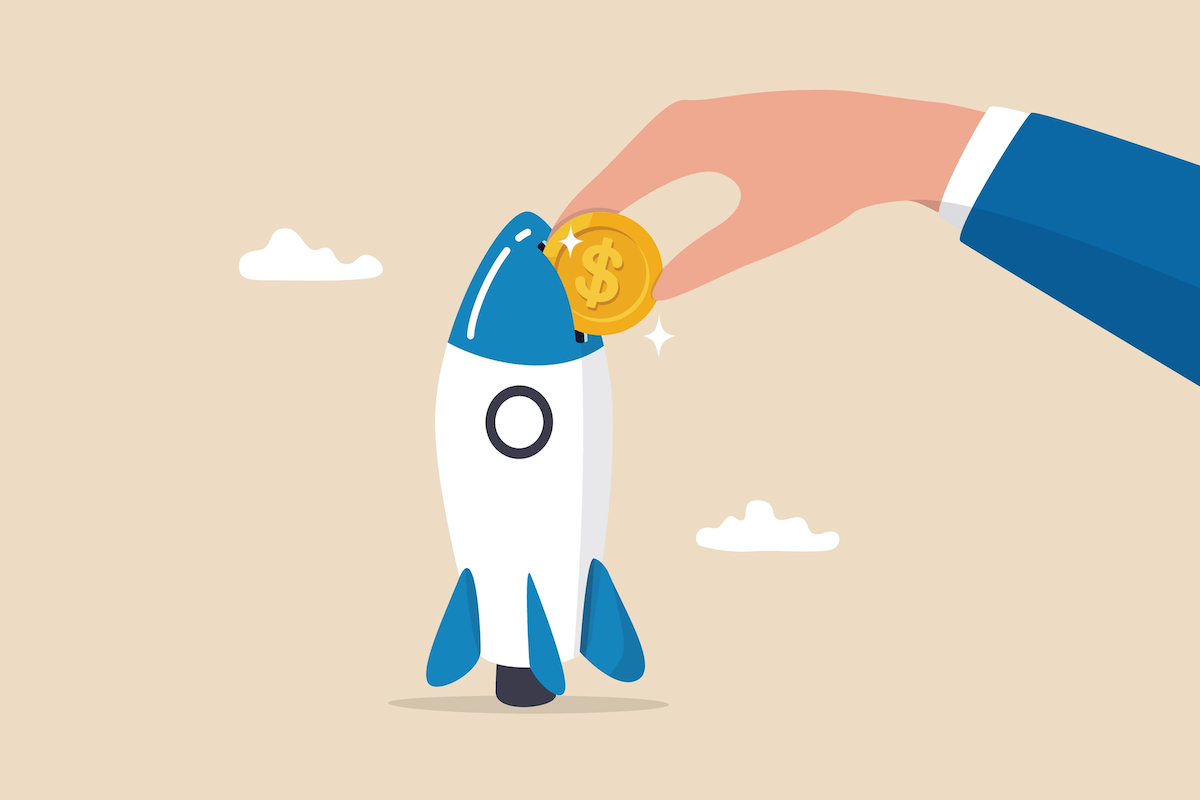How much does it cost to start a printing business? That’s the million-dollar question (or perhaps the million-sheet question!) for aspiring entrepreneurs in the print industry. Launching a printing business requires careful planning and a realistic understanding of upfront and ongoing expenses. From the cost of sophisticated printing equipment to the price of essential supplies and marketing efforts, navigating the financial landscape is crucial for success. This guide breaks down the key cost factors to help you build a solid business plan and launch your printing venture with confidence.
The initial investment will vary greatly depending on the scale of your operation, the type of printing you offer (digital, offset, screen printing, etc.), and the location of your business. Factors such as equipment selection, marketing strategy, and business structure all play a significant role in determining your total startup costs. We’ll explore each of these areas in detail, providing realistic cost estimates and strategies for minimizing expenses while maximizing your chances of profitability.
Startup Costs: How Much Does It Cost To Start A Printing Business

Starting a printing business requires a significant upfront investment in equipment. The cost varies greatly depending on the chosen printing method (offset, digital, screen printing), the volume of work anticipated, and the desired level of automation. Careful planning and budgeting are crucial for success.
Equipment Costs
The initial investment in printing equipment forms the backbone of your operational expenses. This section details the costs associated with acquiring essential machinery and tools.
| Equipment Type | Price Range | Recommended Brands | Justification for Purchase |
|---|---|---|---|
| Digital Printer (High-Volume) | $10,000 – $50,000+ | HP Indigo, Xerox, Canon | Essential for high-volume, fast turnaround jobs. Offers versatility and superior print quality for various media. |
| Digital Printer (Small-Volume) | $500 – $5,000 | HP LaserJet, Epson, Brother | Suitable for low-volume, smaller businesses or those starting out. Cost-effective for initial setup. |
| Offset Press (Large Format) | $50,000 – $250,000+ | Heidelberg, Komori, Ryobi | Ideal for large-scale projects and high-volume printing with consistent, high-quality results. Requires significant investment and expertise. |
| Screen Printing Press | $500 – $10,000+ | Vastex, Anatol, Ryonet | Suitable for customized apparel, promotional items, and unique designs. Cost-effective for specific niche markets. |
| Laminator | $100 – $2,000+ | Fellowes, GBC, Royal Sovereign | Essential for protecting printed materials from wear and tear; enhances durability and professionalism. |
| Binding Machine | $50 – $1,000+ | Fellowes, GBC, Dahle | Crucial for producing professional-looking documents; options include wire-o, coil, and perfect binding. |
| Cutting/Trimming Tools | $50 – $500 | Various manufacturers | Essential for precise cutting and trimming of printed materials; ensures clean and professional finishes. |
Comparison of Printing Methods
Choosing the right printing method significantly impacts startup costs and operational efficiency.
Below is a comparison of offset, digital, and screen printing:
- Offset Printing:
- Advantages: High-volume capability, superior print quality, cost-effective for large runs.
- Disadvantages: High initial investment in equipment, longer setup times, less flexibility for short runs or design changes.
- Digital Printing:
- Advantages: Lower initial investment, fast turnaround times, flexibility for short runs and design variations, on-demand printing capabilities.
- Disadvantages: Higher per-unit cost for large runs compared to offset, print quality may be slightly lower than offset for certain applications.
- Screen Printing:
- Advantages: Ideal for custom apparel and promotional items, vibrant and durable prints, relatively low initial investment for small-scale operations.
- Disadvantages: Labor-intensive, limited to specific substrates, not suitable for high-volume, complex designs.
Software and Design Program Costs
Investing in reliable design and print management software is essential for efficient operations. Costs vary depending on the chosen software and licensing options. Examples include Adobe Creative Suite (Photoshop, Illustrator, InDesign), CorelDRAW, and specialized RIP software for managing large format printers. A realistic budget should include both the initial purchase cost and potential subscription fees for ongoing updates and support. The cost for this software can range from a few hundred dollars for individual applications to thousands for comprehensive suites.
Startup Costs: How Much Does It Cost To Start A Printing Business

Starting a printing business requires a significant investment in supplies and materials, which represent a substantial portion of your initial and ongoing operational expenses. Careful planning and strategic sourcing are crucial to minimizing these costs and maximizing profitability. Understanding the various materials needed, their pricing, and effective procurement strategies is vital for success.
Essential Printing Supplies and Materials
The range of supplies and materials needed depends on the specific printing services offered. However, some essentials are common across most printing businesses. Accurate estimation of these costs is crucial for budgeting and financial planning. The following table provides a sample cost estimation for a small-scale operation. Prices are estimates and may vary based on location, supplier, and quantity purchased.
| Supply | Cost per Unit | Quantity Needed for Startup | Total Estimated Cost |
|---|---|---|---|
| 8.5×11″ 20lb Bond Paper (Ream) | $10 | 50 Reams | $500 |
| 11×17″ 24lb Cover Stock (Ream) | $25 | 20 Reams | $500 |
| Black Ink Cartridge (High-Yield) | $50 | 10 Cartridges | $500 |
| Color Ink Cartridges (Cyan, Magenta, Yellow; High-Yield) | $40 each | 10 Cartridges each color | $1200 |
| Toner Cartridge (Black, for laser printer) | $100 | 5 Cartridges | $500 |
| Cleaning Solution (Printer) | $20 | 5 Bottles | $100 |
| Envelopes (various sizes) | $15 per box (500) | 5 Boxes | $75 |
| Card Stock (various weights and colors) | $30 per pack (250 sheets) | 10 Packs | $300 |
Sourcing Strategies for Printing Supplies
Effective sourcing is key to managing supply costs. Several strategies can help secure competitive pricing:
Bulk Buying: Purchasing supplies in larger quantities often results in significant discounts per unit. For example, buying 200 reams of paper instead of 50 can lead to a substantial cost reduction. This requires sufficient storage space and careful inventory management to prevent waste from spoilage or obsolescence.
Negotiating Contracts: Establishing long-term contracts with reliable suppliers can secure preferential pricing and consistent supply. Negotiating discounts based on volume purchases or committed annual spending is a common practice.
Exploring Different Suppliers: Comparing prices and services from multiple suppliers is essential. Online marketplaces, local wholesalers, and specialized printing supply companies offer various options. Analyzing pricing, delivery times, and customer service can help identify the most cost-effective supplier.
Sample Monthly Consumable Budget
This budget considers a hypothetical print volume of 5,000 pages per month, with a mix of color and black-and-white printing, using the previously estimated costs. This is just an example, and your actual costs will depend on your specific print volume and material usage.
Paper: $200 (Based on estimated monthly usage)
Ink/Toner: $300 (Varying depending on color vs. black & white print jobs)
Cleaning Solutions: $20 (Based on estimated monthly usage)
Envelopes & Card Stock: $100 (Based on estimated monthly usage)
Total Monthly Consumable Costs: $620
Note: This budget is an estimate. Actual costs will fluctuate based on print volume, specific materials used, and any unforeseen expenses.
Startup Costs: How Much Does It Cost To Start A Printing Business
Starting a printing business requires careful consideration of various costs beyond the initial equipment investment. Understanding the expenses related to business setup, legalities, and location will significantly impact your overall budget and long-term profitability. This section details the financial implications of establishing your business legally and securing a suitable workspace.
Business Registration, Licensing, and Insurance
The costs associated with legally establishing your printing business vary depending on your location and chosen business structure. These upfront expenses are crucial for operating legally and protecting your assets. Failure to comply with these legal requirements can lead to significant fines and legal complications.
- Business Registration Fees: These fees vary widely by state and county, typically ranging from $50 to $500. Some jurisdictions offer online registration, potentially reducing administrative costs.
- Licenses and Permits: Depending on your location and the type of printing services offered (e.g., commercial printing, screen printing, etc.), you may need various licenses and permits. These costs can range from $100 to $1,000 or more per license, and obtaining them may require additional time and effort to complete applications and satisfy regulatory requirements.
- Insurance Coverage: Business insurance is essential to protect your assets and liability. General liability insurance, which covers property damage and bodily injury, is typically recommended. Professional liability insurance (Errors and Omissions) might also be necessary, depending on your services. Annual premiums vary widely depending on coverage and risk assessment, but expect to pay anywhere from $500 to $2,000 or more annually.
Business Location Setup: Home-Based vs. Commercial Space
Choosing between a home-based operation and a commercial space significantly impacts your startup costs. A home-based business offers lower initial investment but may limit growth and professional image. A commercial space provides greater professionalism and potential for expansion but incurs substantial rent and utility costs.
- Home-Based Operation: Initial costs are minimal, primarily involving the purchase of necessary equipment and any minor home office renovations. However, you’ll need to factor in increased utility costs and potential zoning regulations.
- Commercial Space: Costs include monthly rent (highly variable depending on location and size), utilities (electricity, water, gas, internet), and potentially renovations or leasehold improvements to suit your printing operations. Expect significant upfront investment for leasehold improvements and ongoing monthly expenses. For example, a 1,000 square foot space in a major city could cost $3,000-$5,000 per month or more in rent alone.
Business Structure Selection
The choice of business structure (sole proprietorship, LLC, partnership, corporation) has significant legal and financial implications. Each structure offers different levels of liability protection, tax obligations, and administrative requirements.
- Sole Proprietorship: Simple to set up, but the owner is personally liable for business debts. Profits are taxed as personal income.
- Limited Liability Company (LLC): Offers liability protection, separating personal assets from business liabilities. Taxation options vary depending on the state and election made by the owner.
- Partnership: Two or more individuals share ownership and responsibility. Liability and taxation depend on the type of partnership (general or limited).
- Corporation (S Corp or C Corp): Provides the strongest liability protection but involves more complex administrative requirements and higher costs for setup and ongoing maintenance. Taxation is different from other structures and involves more complexity.
Startup Costs: How Much Does It Cost To Start A Printing Business
Launching a printing business requires significant upfront investment, extending beyond the cost of equipment. A crucial aspect often overlooked is the expense associated with marketing and sales, vital for attracting clients and generating revenue. Effective marketing strategies are not merely an added cost; they are a fundamental investment in the long-term success of your printing business.
Marketing and Sales Costs
Building a robust marketing and sales strategy is essential for attracting customers and achieving profitability. This involves a multifaceted approach, encompassing both online and offline tactics. Ignoring this aspect can severely hinder your business’s growth potential. A well-defined marketing plan, coupled with consistent effort, will yield far greater returns than a haphazard approach.
- Website Development: A professional website is crucial for showcasing your services, building credibility, and attracting potential clients. Costs can range from a few hundred dollars for a basic template-based site to several thousand dollars for a custom-designed website with advanced features. This includes domain registration, hosting fees, and potentially the cost of a website designer or developer. A well-designed site, featuring high-quality images of your work and clear pricing information, is essential.
- Online Advertising: Platforms like Google Ads and social media advertising (Facebook, Instagram, etc.) offer targeted advertising options. Budget allocation depends heavily on your target market and campaign goals. A typical monthly budget for Google Ads could range from $500 to $2000 or more, depending on the competitiveness of your s and your desired reach. Social media advertising costs can vary significantly depending on the platform and the targeting strategy employed. Consider a separate budget for each platform.
- Print Marketing Materials: Traditional marketing methods remain relevant. Brochures, flyers, and business cards are still effective tools for reaching potential clients, particularly within local communities. The cost of design and printing will vary based on quantity and quality. For example, designing and printing 500 high-quality brochures could cost between $300 and $800, while flyers might be cheaper at $100-$300 for a similar quantity. Consider including a QR code linking to your website for enhanced engagement.
Building a strong customer base requires proactive engagement beyond online advertising. Networking, industry events, and public relations play a significant role in establishing your brand and generating leads. The return on investment for these activities may not be immediately apparent, but consistent effort will yield long-term benefits.
- Networking: Attending industry events, joining relevant associations, and actively participating in online forums can help you connect with potential clients and partners. The cost varies depending on the event or membership fees, ranging from free (online forums) to hundreds of dollars for conferences and trade shows. Building relationships takes time and consistent effort, but the payoff can be substantial.
- Industry Events: Trade shows and conferences offer valuable opportunities for networking and showcasing your services. Costs can include booth rental, travel expenses, and marketing materials specifically designed for the event. A typical trade show booth might cost anywhere from $1,000 to $5,000 or more, depending on size and location.
- Public Relations: Press releases, media outreach, and collaborations with local businesses can increase brand awareness and generate positive publicity. While some PR activities are cost-effective (e.g., writing and distributing press releases), others may require hiring a PR agency, which can be quite expensive. Costs vary greatly depending on the complexity and scale of the PR campaign.
Sample First-Year Marketing Budget
The following is a sample marketing budget for the first year of operation. This is a general guideline and should be adjusted based on your specific business needs and target market. Remember to track your marketing ROI closely to optimize your spending over time.
| Marketing Activity | Monthly Budget | Annual Budget |
|---|---|---|
| Website Development | $0 (one-time cost) | $2000 |
| Google Ads | $500 | $6000 |
| Social Media Marketing | $250 | $3000 |
| Print Marketing Materials | $100 | $1200 |
| Networking & Industry Events | $200 | $2400 |
| Public Relations | $100 | $1200 |
| Total | $1150 | $15800 |
Startup Costs: How Much Does It Cost To Start A Printing Business

Starting a printing business requires careful financial planning. Beyond the costs of equipment and supplies, several other expenses can significantly impact your initial investment and ongoing operational budget. Understanding these hidden costs is crucial for accurate budgeting and successful business launch.
Other Startup Expenses, How much does it cost to start a printing business
A comprehensive budget must account for expenses beyond the core printing equipment and materials. These additional costs, while often overlooked, are essential for a smooth and legal business operation. Failing to plan for these can lead to unforeseen financial strain in the early stages of your business.
- Accounting and Legal Fees: These encompass costs associated with setting up your business legally, including registering your business, obtaining necessary licenses and permits, and establishing an accounting system. Expect to pay for services such as initial consultations with legal and accounting professionals, ongoing bookkeeping, and tax preparation. These fees vary greatly depending on location and the complexity of your business structure. For example, forming an LLC might involve higher legal fees than a sole proprietorship.
- Professional Services: Establishing a strong brand presence and online visibility requires professional assistance. This includes website design and development costs, graphic design for logos, marketing materials, and potentially ongoing website maintenance. The cost of these services depends on the complexity of the design and the experience of the professionals you hire. A simple website might cost a few hundred dollars, while a more complex e-commerce site could cost several thousand.
- Initial Operating Capital: This crucial expense covers your business’s operational needs before you start generating significant revenue. It includes rent or mortgage payments for your workspace, utility bills, insurance premiums, marketing and advertising costs, and initial inventory purchases beyond the equipment and materials. The amount needed depends on your business size, location, and operating model. A larger facility in a high-rent area will require significantly more capital than a smaller home-based operation.
Business Plan and Financial Projections
Creating a comprehensive business plan is paramount. This document serves as a roadmap for your business, outlining your goals, strategies, and financial projections. A detailed financial projection is a critical component, forecasting your income and expenses over a specific period (typically the first three to five years). This projection should incorporate all startup costs, including those detailed above, and provide a realistic estimate of your break-even point. A well-structured business plan increases your chances of securing funding from lenders or investors. For example, a business plan demonstrating a clear path to profitability is far more likely to attract investment than one that lacks a detailed financial analysis.
Total Startup Cost Calculation
Calculating your total startup costs involves summing up all the expenses from the previous sections. This includes the cost of printing equipment, supplies, software, other expenses discussed above, and initial operating capital. For instance, if your equipment costs $20,000, supplies are $5,000, software is $1,000, other expenses (accounting, legal, professional services) total $3,000, and initial operating capital is $10,000, your total startup cost would be $39,000.
Total Startup Cost = Equipment Cost + Supplies Cost + Software Cost + Other Expenses + Initial Operating Capital






